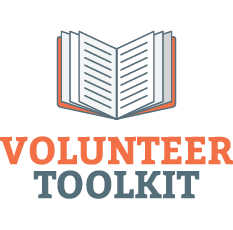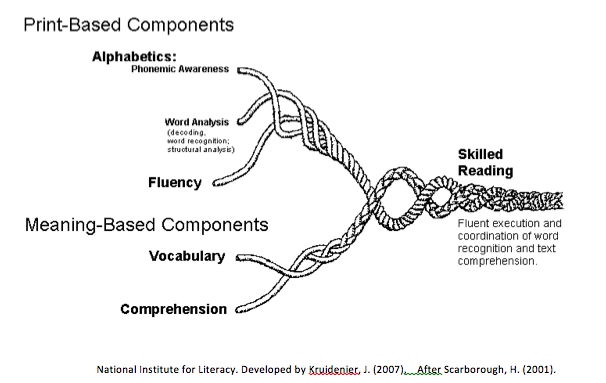The Components of Reading
When we think about reading, we think about getting meaning from print. The definition may seem simple, but to read something requires several skills. Research has identified five components of reading:
- Phonemic awareness
- Decoding
- Fluency
- Vocabulary
- Comprehension
Each of the first four components plays an important role in comprehension, which is the goal of reading!
The foundation for reading is the ability to identify words in print. For that, we need phonemic awareness, which is the ability to detect individual speech sounds within words. Phonemic awareness is about speech sounds only. It refers to the sounds of speech as distinct from their meanings—a continuum of abilities beginning at the simplest level with rhyme awareness, an awareness of words within sentences, syllables within words, the perception of individual sounds within syllables and words. Students must develop an ability to think about the sounds of language and manipulate those sounds in various ways!
You may wonder about how students manipulate the sounds. Students may be asked to isolate sounds. What is the first sound in past? What is the last sound in hat? Students may be asked to identify sounds—What sound is the same in boy, bike, bell? You might ask students to categorize sounds—which word does not belong: bus, rug, bun? Students need to learn to blend sounds—What is this word? /b/ /a/ /t/. Or they may need practice in segmenting sounds—how many sounds are in the word ship? You might ask students to delete sounds—what is smile without the /s/? What is brook without the /r/? Blending and segmenting are the most useful of these skills.
Developing phonemic awareness is not an end in itself. It is taught in combination with phonics instruction and other skills because they reinforce each other. When we have phonemic awareness, we can then begin to develop accurate decoding skills.
Decoding is a word identification skill that involves using letter-sound correspondences to recognize words in print. Beginning readers use decoding skills to “get the words off the page.” They are breaking the code. Decoding at higher skill levels includes using larger word parts—like syllables, prefixes, and suffixes.
Sight words are those words a reader recognizes automatically and reads rapidly. Some words that are frequently encountered, especially those that don’t sound the way they look, are taught to be recognized on sight. This will enhance reading speed and fluency. If a reader identifies a word by decoding, after many exposures the word is stored in memory and can be quickly recognized.
Phonemic awareness and decoding are necessary but not sufficient for reading comprehension.
Reading fluency refers to the speed, accuracy, and expression of the reader. A fluent reader is skilled at identifying words and reads with appropriate phrasing and intonation. Fluent reading should sound like speech. Improving fluency requires repeated, oral reading practice with a partner providing modeling, feedback, and assistance. Repetition leads to ease of recognition…recognition that requires little effort or attention, which in turn is the key to fluency. Being fluent frees students to understand what they read.
Phonemic awareness and decoding are required to develop fluency. Fluency is necessary but not sufficient to ensure reading comprehension.
Vocabulary refers to the words understood or used by a person. Our oral vocabulary is the words we can understand and use in speaking and listening. Our reading vocabulary is words that we can read and understand.
Accurate, fluent reading does not guarantee comprehension. Specific comprehension strategies may need to be taught.
These components should not be seen as sequential. Students don’t learn to say the words using phonemic awareness and decoding then become fluent, then develop vocabulary and then focus on comprehension. All the components reinforce each other, and as a result, often develop simultaneously. We should address all the necessary components at appropriate levels of difficulty in reading lessons.
The skills should be taught and practiced not only with drills and workbook exercises, but also with meaningful, authentic (real-life) materials.
Another way to understand the components is to group them into two categories:
- Print skills—phonemic awareness, decoding, and fluency
- Meaning skills—vocabulary and comprehension
Print skills have to do with reading words accurately and rapidly. When use of these skills is comfortable and automatic, the reader can concentrate on the meaning of the text.
One way we might think of the components of reading is to think of a rope. Rope is made with strands of fibers interwoven to make them strong. In the same way, we want to build reading skills in each of the components so the end product is a strong reader!
Check Your Knowledge
d

